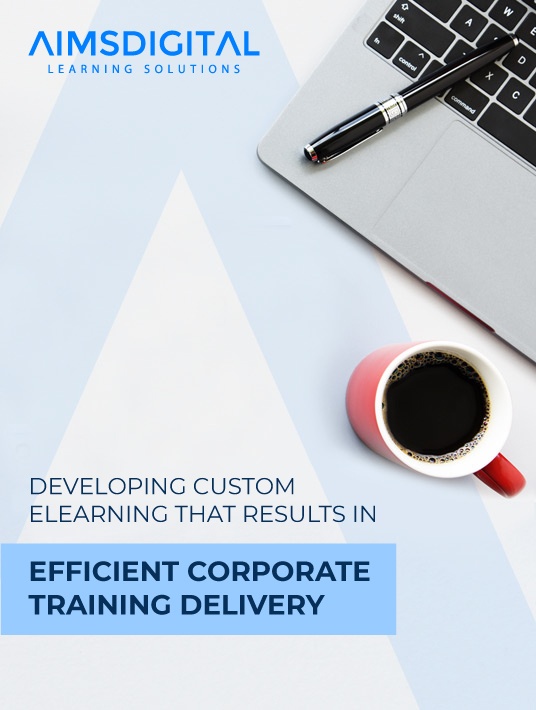Overcoming Some Of The Common Pain Points While Developing Custom eLearning
What, then, are these obstacles or pain points one needs to consider? Here’s looking at 6 of the most common ones.

1. Lack Of Learner Motivation
This isn’t a new problem—not by a far cry! A lot has been researched and said about learner motivation over the ages, yet we’re hardly any closer to cracking this mystery than we were a decade back. But everybody is struggling with it, so it’s a level playing field. Therefore, you might have to dangle a carrot to motivate your learners. It could be in the form of tangible rewards or adding a social angle to your learning piece—gamification, badges, and the like. The most important factor, though, is strong learning content. No matter how interesting and innovative your delivery approach is, it’s finally the content that has to shine. Ensure strong content and follow it through with presentation techniques that resonate with your target audience.
2. Short Attention Spans
Attention spans are getting shorter and shorter by the day. And that leaves you with very little time to draw your learners into your course, even if the intrinsic motivation is high. Yes, you need to catch their attention first, before they listen to you; but, that’s more about Instructional Design. The pain point here is keeping your learners with you once they’ve entered the course. Keeping in mind that attention spans are short, break your content down to small, digestible chunks. Your learners would learn a lot more if they went through six 10-minute lessons instead of a single hour-long course.
3. Time Pressures
Another huge pain point for any L&D department is that once a request for a course is raised or approvals are received, it becomes due yesterday. To create a successful course, you need to be practical about deadlines. It’s custom eLearning development we are talking about, not TV dinners. It takes time, effort, and patience. You’re not going to be able to do a good job with the stakeholders breathing down your neck. You need to impress upon them the complexity of what you are setting out to create—and work out reasonable timelines. Reasonable being the watchword. Plan all the activities out and share your development plan with your stakeholders. Chances are, they’ll see things your way. Use your time wisely and spend time on planning and analysis—you won’t regret it later!
4. Language Barriers
It gets more interesting (read: complicated) if you are creating a course that’s multi-lingual. You need to take into consideration all that goes into localization, even before you begin development in your base language. Small things make a big difference—if you’re going to have your course in various languages, you’d be better off not having text within images, but instead have labels as separate entities. Remember, localization goes well beyond translation—it has to consider sensibilities of all the regions you wish to cater to, and strike the right balance. You’d do well to think of the universal nature of graphics or even examples. Yes, you’d need to think well ahead to make it a success.
5. Technology And Infrastructure Limitations
Technology is good—but it can be a pain at times. Sometimes, there can be too much choice and that’s not always a good thing. Before you begin developing your course, you need to give technology a thought. One is the platform—do you need a course that caters to desktops, mobile phones, or both? If you use audio are the circumstances of your learners conducive to using audio? Do all your learners have sufficient bandwidth to view videos, if that’s what you have planned? To increase efficacy, you need to ask around and then freeze upon an approach that works optimally. There are times when you may have to compromise on the fancy stuff, but form follows function for a reason—stay true to your intent. Don’t get swayed by technology—you might spend time and money on Virtual Reality because it’s exciting, but it wouldn’t help if your learners do not have access to VR headsets, would it?
6. Budget Considerations
Quality comes at a price. Good quality catalog courses do not come cheap. So, if you’re deliberating between off-the-shelf content and custom development, there’s a better way of looking at it. In the face of it, custom eLearning development may seem to be an expensive proposition. But, that’s not really the case. Off-the-shelf courses tend to be per-user, subscription-based custom eLearning; on the other hand, it is your intellectual property and can be deployed to thousands of users without incurring additional costs. These courses can be used for years and offer a better Return On Investment in the long run. It might surprise you to know that if you’re on a stringent budget, there are still many options like rapid authoring and PowerPoint presentations published as packages that could serve your purpose well, without costing a bomb!
You may encounter many more pain points as you go along, but they can be overcome if you are rational about how you proceed. Caving under pressure, going overboard to please the learners, or getting carried away with technology offerings can only jeopardize your initiative. Build your course around your content—don’t try and fit your content into preconceived ideas. Download the eBook: "Developing Custom eLearning That Results In Efficient Corporate Training Delivery" or watch this webinar to understand the several layers involved in overcoming these pain points!









